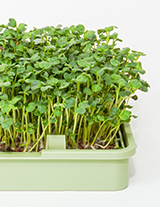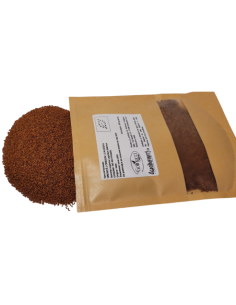
In modern times, more so since 1900, we see a lot of documentation from China about the cultivation of sprout vegetables. Sprouts, rich in vitamins and nutrients, are a vital source of food in China, especially in winter and in colder northern regions where other types of vegetables are not available.
World War II
During the Second World War, US interest in eating sprouted seeds increased. The concern was that, as in Europe, a prolonged war would restrict the availability of meat and dairy products, so an alternative and quick source of protein had to be sought for the American consumer.
Ultimately, the option scientists came up with was germinating high-protein seeds, especially beans and soybeans, in urban homes.
Shortly after the outbreak of World War II, the US government created and distributed leaflets on how to germinate and prepare various seeds.
Sprouts and microplants today
In the mid-1960s, growing vegetables as sprouts, shoots or microgreens began to arouse the interest of the general public, this time the desire for healthy nutrition and not the fear of war being the main reason.
Contributing to this renewed interest have been the back-to-the-earth movement, increased awareness of the need to protect the environment and enthusiasm for fresh, natural food.
At the end of the decade, Ann Wigmore, who can be considered the forerunner of today's raw food movement, promoted the philosophy of "living food", drew attention to the danger of introducing additives into food, but also to the use of sprouts, especially wheatgrass, as antioxidants for the body.
Sprouts and shoots or microgreens, as they are also known, were a vital part of Wigmore's message about how to eat to improve your health.
This interest is very much alive in the current raw food trend. Sprouting seeds in a few days is a smart and quick way to increase nutrient intake from vegetables, with sprouted seeds having up to 40 times more vitamins and minerals than conventional vegetables.
Lately, there has been an emphasis on microgreens, which represent the 7-14 day seed growth stage, the difference from sprouts being exposure to photosynthesis (light).
Professional chefs were the first to discover and use these microgreens, especially for aesthetic purposes. A few microgreens of peas or rocket brighten up any dish and give an intense flavour to every dish, but in larger quantities they are considered nutritional bombs and fall into the category of superfoods.
Alongside the introduction of microplants in premium restaurants, the urban gardening trend has taken root, with its message that no matter how small your space, whether it's an apartment or a terrace, you can grow something. So why not start with some sprouts or microgreens?
Mars, a big step for hydroponics and an even bigger step for mankind.
In order to be able to sustain a growing population's diet in the future, NASA has proposed the development of hydroponic crops, which provide an increased nutrient supply per unit of growing medium.
We also have NASA to thank for adapting how to grow hydroponic crops in weightlessness. These small but resilient plants have become the most viable solution for feeding a future human colony on Mars. NASA already has experience with these hydroponic crops on the International Space Station where astronauts-turned-space farmers have successfully grown sprouts and microplants in weightlessness.
So, starting with the Gardens of Babylon (Year 1 AD), the Hanging Gardens of the Aztecs/Chinampa (Year 1516 AD) and continuing with Imperial China, the United States, the history of sprouts and microplants continues to be written and evolve on Earth, hopefully soon on other planets as well.

 Microgreens
Microgreens

























